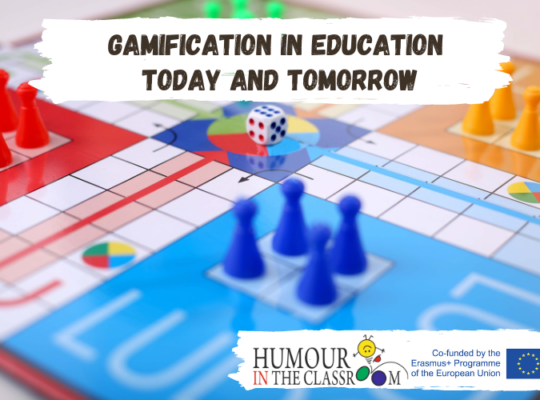Teachers and students share the belief that learning should be fun. Award-winning educators encourage the use of humor to create an inviting classroom environment (e.g., Buskist, 2002; Roth, 1997), and students believe that classroom humor relieves stress, improves attention, and enhances learning (Gorham & Christophel, 1990; Wanzer & Frymier, 1999; White, 2001). Although many empirical studies concerning the educational benefits of humor are outdated, anecdotal, or correlational, most of the findings support the use of humor as an instructional strategy (e.g., Berk, 2000; Berk & Nanda, 1998; Ziv, 1988). As Berk and Nanda observed, “the process of generating creative strategies for using humor in college teaching has just begun” (p. 404), and additional research is needed to determine how the systematic use of humor affects instruction and learning.
In the first study of humor incorporated systematically into online instruction, we ( LoSchiavo & Shatz, 2005) tested the effectiveness of humor as an instructional strategy in an online general psychology course. We randomly assigned students to a standard section of the online course or to a section enhanced with additional humorous content. Humor significantly influenced student interest and participation but had no effect on overall course performance. In a follow-up survey, students in the humor-enhanced section were more likely to appreciate the humorous content, recommend that humor continue to be used, and agree that humorous content made the course more interesting. Humor also bridged the student-teacher gap by allowing students to view the instructor as more approachable. In the humor-enhanced section, student evaluation comments included “He was funny,” “The instructor made the course fun and interesting,” and “Extremely helpful and a fun guy to communicate with this way.”
In the traditional classroom, humor does not constitute radical pedagogy, as educational experts have long advocated its use. However, in the highly structured environment of virtual learning, instructors have fewer tools at their disposal. For example, online instructors cannot schedule breaks and serve snacks in an effort to lighten the classroom atmosphere and promote social interaction. Our empirical study demonstrated that the planned, systematic use of humor enhances the social aspects of online instruction.
Humor is not a pedagogical panacea, and the mere inclusion of humor will not assure that learning will occur. If humor is used too frequently or inappropriately, students might perceive important topics as trivial and the instructor as less-than-serious. However, the judicious, appropriate, and timely use of humor can augment teaching by increasing students’ interest and attention, and by reducing anxiety about “dread” subjects, such as statistics and research methods (Kher, Molstad, & Donahue, 1999; Korobkin, 1988).
The challenge for instructors teaching online courses is to learn to use humor to create interesting and inviting virtual learning environments while minimizing any potential pitfalls of humor as an instructional device. In a commentary noting the need for humor in online courses, James (2004) observed that “Because humor is one of the major traits of the best, most effective teachers, it is a characteristic that all teachers should want to hone, practice, and nurture, regardless of medium” (p. 94).
Although there are a variety of articles and books describing how to use humor in traditional courses (e.g., Berk, 1998; Garner, 2005; Hill, 1988; Powers, 2005; Weaver & Cotrell, 2001), there is no information concerning ways to incorporate humor into online instruction. Based on our experience using humor as an instructional strategy in traditional and online courses, we guide instructors through the process of integrating humor into online courses. We explain how the educational context influences students’ expectations and responses to humor, and we identify the types of humor most appropriate for online courses. We describe guidelines for locating, selecting, developing, and incorporating humor into lecture modules and examinations. We provide examples of humor used in online course materials, and we identify print and electronic resources that instructors can use to generate and refine their course materials.
Source: https://radicalpedagogy.icaap.org/content/issue8_2/shatz.html






